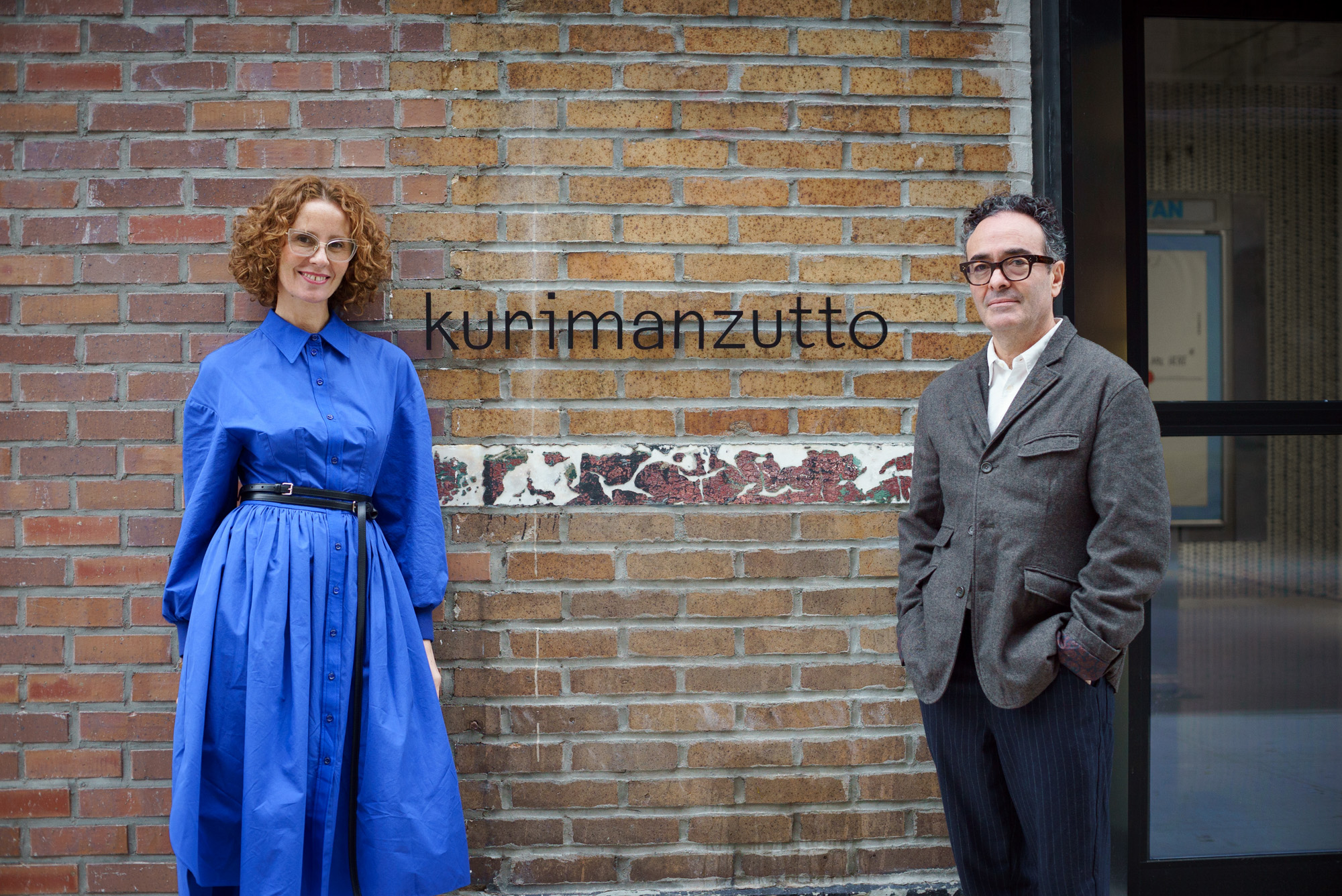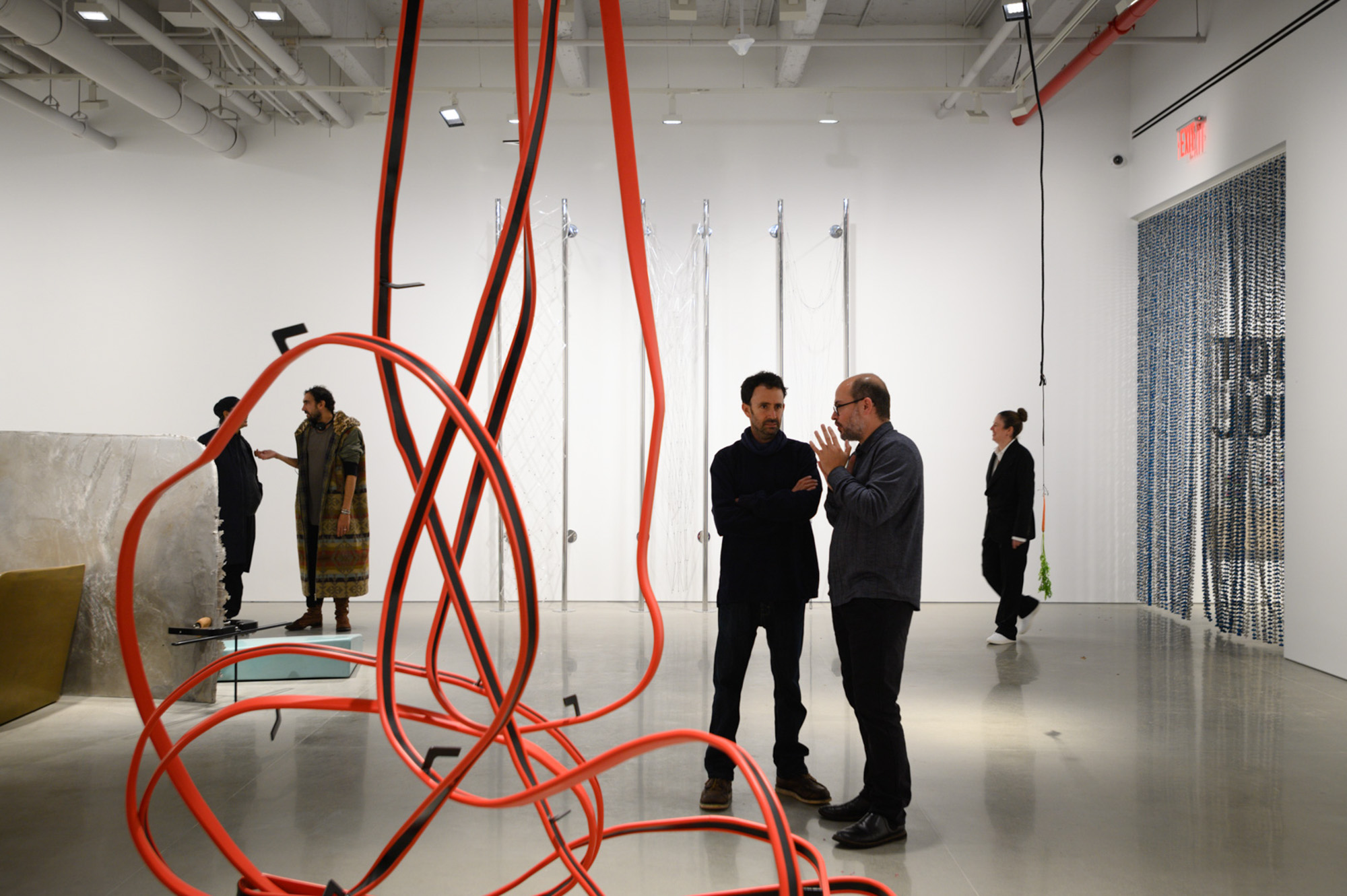Market
Unconventional Instigator of Ideas: Interview with kurimanzutto


The leading experimental art gallery in Mexico for more than two decades, kurimanzutto opened its new home in the Chelsea neighborhood of New York in November with a group exhibition of 39 artists, “TODOS JUNTOS (All Together).” ArtAsiaPacific spoke with co-founder Mónica Manzutto about the gallery’s artist-first approach to making exhibitions and how the gallery sees its position between its roots in Mexico and network of artists working around the world.
In 1999, you envisioned a gallery “with no space that responds to the freedom artists had at the time in Mexico.” How do you see this spirit of “freedom” and experimentation developing in your new neighborhood in New York?
One of the most relevant aspects of kurimanzutto is that it was conceived by an artist, Gabriel Orozco. After Gabriel approached my partner, José Kuri, and I, we then opened up the idea to a very specific group of Mexican artists in Mexico who did not have gallery representation at that time. The only international artist invited from the very beginning was Rirkrit Tiravanija, who was a long time friend of Gabriel in New York. Gabriel made another important proposal that was crucial to the formation of the gallery; he proposed that instead of establishing a permanent space, kurimanzutto should function as a gallery that responds to specific projects in Mexico and abroad.
With this core principle we opened the gallery in the Mercado de Medellin, a popular market in the Colonia Roma neighborhood. It was a one-day presentation in which the artists made works using materials from the market. Rirkrit cooked in one of the communal kitchens there as well. The project was called “Economía de Mercado” (Market Economy). Curators, collectors, friends, and the market’s usual visitors were all able to acquire the works at prices that corresponded to the products on sale in the neighboring stalls, which were selling flowers, fruit, and groceries. For the next nine years after that we continued presenting site-specific projects by our artists in venues that included an old movie theater, a carpet showroom, and a parking lot. We saw ourselves as instigators of ideas, as a platform where artists could develop their own language and vocabulary.
This creative approach to exhibition-making and adaptable spirit has been with us ever since. Even with two brick-and-mortar locations in Mexico City and New York we are still keen to realize unconventional projects outside the galleries’ walls. Most importantly, we aim to transmit that same spirit of openness to the projects that happen inside of them as well.

You had a smaller New York space on the Upper East Side and also ran the TITAN Billboards project until 2021, and Kurimanzutto Out East is located in East Hampton, Long Island. What about those projects made you want commit to a larger gallery space in Chelsea?
With those initiatives we started to spend increasingly more time in New York and became even more involved in the city’s robust community. After discussions with many of our artists we decided it was the right time to make a more substantial commitment to the city. The prospect of weaving what we do into the future memory of New York is highly motivating to us.
How do you envision the program in Chelsea complementing or building on the program at your home base in Mexico City?
Kurimanzutto Mexico is the primary source of everything we do and the reason we exist as a gallery. We see New York not as a branch but as a complement or extension to the work we do for the artists. The New York gallery provides them with yet another opportunity to explore and manifest their ideas. Being in New York gives us access to so many fantastic institutions and thinkers in every field.
Just as with your Mexico space, where you undertook less commercially driven, more collaborative efforts such as hosting international artists and curators, will your Chelsea space also serve as site of collaboration?
We enjoy the cross-fertilization of music, literature, film, theater, dance, etc. We think about what we do as an open plane with no fixed notions of what art or a gallery should be. We have dedicated a great deal of time in educating and sharing our artists’ practices to local and international curators and collectors and have no plans to change our way of working now.

Over the years, you’ve built a roster of artists that has grown to more closely resemble a family, even taking this as the theme of the inaugural show, “TODOS JUNTOS (All Together),” which featured works from your very first exhibition, “Market Economy,” in August 1999. Do you see this family growing significantly now that you have a footprint in a new city, or will you continue to focus on your existing roster?
We don’t believe it necessarily has to be one or the other. The New York gallery will give us an opportunity to introduce those artists who have had limited exposure in the United States to broader audiences. At the same time, it is also important that we respond to this new context. Contributing to the city’s community entails engaging with its artists too.
Kurimanzutto has established a reputation as a gallery with a geographically diverse roster of artists including Haegue Yang, Danh Vo, Oscar Murillo, and Rirkrit Tiravanija, alongside many leading artists from Mexico. Do you see your primary commitment as promoting emerging Mexican artistic talent or has it shifted since the gallery’s inception?
We started with artists from Mexico, as it was the context we best understood and could be the most impactful in. Then we understood that the best recommendations for new artists we could receive came from other artists. So, listening to our artists is how we have grown, like a rhizome, or the branches of a tree.
It was never done consciously, but it is interesting to look back and see that many of the artists we work with have practices shaped within the Western canon but who were born or come from other latitudes—Nairy Baghramian is from Iran, Tarek Atoui from Lebanon, Danh Vo from Vietnam. Would you consider Mexico part of the Western canon? Probably, just because we were a Spanish colony, but the roots and cosmogony of our pre-Hispanic world might have more connections with Eastern ideas or philosophies.

Though you’ve just hit a milestone in the gallery’s history by opening this space in Chelsea, are there any plans in the future to look further East, to Asia?
Kurimanzutto relates to Asia through one-to-one relationships with our network of collaborators there. This is something we have invested in for many years, though more intensely in the last five. Additionally, our artists have been active in Asia through many solo exhibitions in institutions, biennales and galleries, including Korea, Japan, Thailand, China, Hong Kong, Singapore, Taiwan, Indonesia, and the Philippines.
We also fostered a very intimate relationship with the late David Medalla through the exhibition “Signals: If You Like I Shall Grow” that we staged in 2018. A Filipino artist who moved to Europe in the 1960s and was a part of the avant-garde community there, he helped to co-run Signals Gallery alongside other artists and thinkers of the time.
More recently, [Mori Art Museum director] Mami Kataoka invited Roman Ondak, Leonor Antunes, and Gabriel Orozco to the Aichi Triennale 2022. As artistic director of the triennial Okayama Art Summit 2022, Rirkrit Tiravanija invited Bárbara Sánchez-Kane, Haegue Yang, Abraham Cruzvillegas, and David Medalla to participate in the festival.
What projects are you excited about for your artists in 2023, both in the gallery spaces and beyond?
We will start the year in Mexico with an exhibition by Nairy Baghramian that is largely based on her current show at the Nasher Sculpture Center in Dallas. Following her exhibition, we will open Paulina Olowska, who will exhibit sculptures and paintings. The first solo exhibition in New York will be by Minerva Cuevas, followed by shows from Abraham Cruzvillegas and then Carlos Amorales. Our artists have many exciting museum shows opening next year as well: Haegue Yang at the Pinacoteca de São Paulo, Gabriel Kuri at Museo Jumex in Mexico City, and Damian Ortega was awarded the 2023 Zurich Art Prize, which will result in a solo exhibition at the Museum Haus Konstruktiv at the end of the year.
Monica Fernandez was ArtAsiaPacific’s editorial intern.







